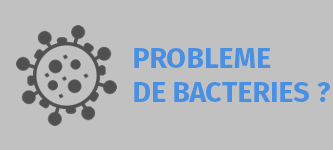| » |
Pest Control Solutions: What types of pests do we have in the house?
Pests are mice, birds, flies, mosquitoes, cockroaches and other animals which can spread infections or render food unfit for consumption by their presence in food premises.
We offer you defensive measures once a pest has entered your home. There are several ways to eliminate mice, rats, or insects of all kinds inside and outside your home.
Types of products to eliminate rodents
Getting rid of mice and rats in a private house is more difficult than in an apartment. The traditional method is to lay down bait so that the rodent colony decreases over time.
Rodenticides are manufactured in the form of different types of products depending on their area of application. These rodenticides, which must be ingested, can be either pieces or seeds packaged in sachets for the individual or in bulk for the professional, or pastes or even creams with high anticoagulant power.
Make sure there are no openings in the building where rats and mice can enter.
Mice in the house are often unwanted guests. Their presence can be dangerous to health. Therefore, you should immediately start getting rid of them.
Check ventilation ducts, basements, attics, garbage cans, garbage rooms, compost and drains. Mice only need a 7 millimeter opening to get in and rats need about 15 millimeters.
Clean up food scraps and trash that attract rats and mice.
Store household waste in closed containers with lids.
Do not store food open, but in the freezer and refrigerator or in various tightly closed containers.
Why fight rats?
The main reason for rat and vermin control is to minimize the risk of infection. Rats spread infection through urine and faeces, for example salmonella which is the cause of severe cases of food poisoning. It is also not uncommon for rats to damage electrical objects and cables. Rats reproduce very quickly and a female has an average of 3 to 5 litters per year. That means more than 100 little rats in a year. It is therefore very important to control the rats in time.
You must do everything to avoid having rats in your home or business.
A simple measure is to ensure that food and water are not readily available and that there are no areas where rats can seek shelter
Types of products to eliminate insects
If you are tired of using chemicals that are very toxic to the environment and to people, the effectiveness of which sometimes leaves something to be desired, I would recommend that you use a natural insecticide, diatomaceous earth, which can even natural fertilizer.
Use alternatives to mosquito and fly repellents, such as natural pyrethrum or mosquito netting.
Only use mosquito and tick repellents when absolutely necessary.
What is Diatomaceous Earth?
It is a siliceous mineral formed from fossilized microscopic algae. When the algae die, their organic content is destroyed, leaving only their silica skeletons, which settle to the bottom of the water. Over time, large deposits of fossilized algae called diatoms are formed.
It is an effective insecticide. It can be used both preventively and to treat pests. It repels and eliminates many insects: ants, bedbugs, dust mites, spider mites, mosquitoes, larvae, lice, lobsters… not to mention molluscs.
It contains almost 40 minerals and trace elements, including calcium, iron, magnesium, manganese, zinc, silver, silicon dioxide, titanium, uranium and zinc, all very important for good plant growth
How it works ?
What each diatom does is enter a parasite, insect, or small animal (like the slug) that damages the plants, causing them to die of dehydration. Thus, these enemies of succulents cannot develop any kind of resistance to this insecticide.
Rats can cause significant property damage and can cause discomfort when entering our homes. It is the responsibility of every homeowner to keep rats away.
How you can avoid being affected by pests.
Store smart. Rats are looking for food and warmth - and their survival instincts are extremely strong. Be sure to store pet food or bird seed in sealed plastic bins to avoid attracting rats.
Close and seal the holes well. Be sure to seal ventilation in the eaves or along the plinth of your home
Rats can squeeze through small cracks of 13 millimeters - mice can penetrate 5-6 millimeters.





























































